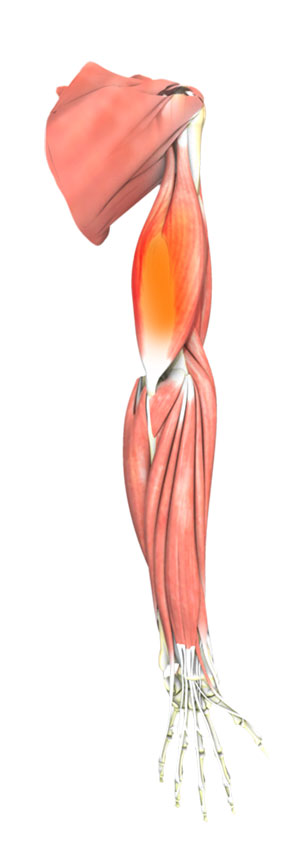
What are Triceps Injuries?
The triceps or triceps brachii is a crucial muscle of the arm. It runs along the back of the upper arm bone (humerus) between the shoulder and the elbow. Tendons are strong bands of tissue that attach muscle to bone. The triceps tendon connects the triceps muscle in the arm to the elbow bone and allows extension of your arm. A triceps injury involves damage to this tendon and may affect your ability to move the arm at the elbow.
Types of triceps trauma or injury may include:
- Muscle pull or strain
- Triceps rupture, a tearing of the tendon
- Tendonitis, inflammation of the tendon
- Tendinosis, chronic degeneration as a result of repeated injuries
Causes of Triceps Injuries
Triceps injuries are common in athletes and sports enthusiasts and may occur suddenly or gradually over time. Some of the causes of triceps injuries include:
- Receiving a sudden blow
- Forcibly straightening the arm
- Overstretching the arm
- Repeated overuse of the upper arm
- Excessive force on the triceps resulting in rupture, such as lifting heavy weights
Signs and Symptoms of Triceps Injuries
Pain is the primary symptom of triceps injuries, which may be severe. Other common signs and symptoms of triceps injuries include:
- Tenderness
- Redness or bruising
- Weakness
- Stiffness
- Inability to bend or straighten the arm
- Soreness
- Swelling
Diagnosis of Triceps Injuries
In order to diagnose triceps injuries, your doctor will review your medical history and conduct a thorough physical examination. During the physical exam, your doctor may press on the triceps area and also ask you to move your arm in different positions to check for range of motion and symptoms of pain, weakness, or swelling. If your doctor suspects any rupture of the triceps, then X-ray, ultrasound, or MRI may be ordered to confirm the diagnosis.
Treatment of Triceps Injuries
Treatment of triceps injuries usually depends on the nature and seriousness of the injury. Minor injuries are amenable to conservative treatment, whereas serious rupture injuries that result in the detachment of the triceps tendon from the attached bone will require surgical intervention.
Non-surgical or conservative treatment will typically involve:
- Application of ice and heat to reduce swelling and pain
- Prolonged rest to the injured triceps muscle to allow healing
- Physical therapy and exercise regimen to improve range of motion and strengthen muscles
- Use of over-the-counter pain medicines and nonsteroidal anti-inflammatory drugs (NSAIDs)
The surgical treatment will involve a surgical procedure to repair the ruptured triceps tendon. The procedure involves the following steps:
- Medications through an intravenous line will be administered to help you relax.
- General or regional anesthesia is administered to keep you comfortable during the surgery.
- Your surgeon will make an incision on the back of the elbow and place sutures into the ruptured tendon. The tendon will then be repaired back to bone using bone tunnels or anchors.
- After the tendon is attached to the bone, the incision is closed and a splint is applied.
Related Topics
- Triceps Injuries
- Osteochondritis Dissecans of the Capitellum
- Elbow Trauma
- Elbow Arthritis
- Bicep Tendon Tear at the Elbow
- Elbow Dislocation
- Triceps Tendonitis
- Elbow (Olecranon) Bursitis
- Elbow Sprain
- Tennis Elbow
- Golfer's Elbow
- Little League Elbow
- Nursemaid's Elbow
- Elbow Pain
- Elbow Contracture
- Distal Humerus Fractures of the Elbow
- Radial Head Fractures of the Elbow
- Elbow Fractures
- Ulnar Nerve Neuropathy
- Loose Bodies in the Elbow
- Radial Tunnel Syndrome
- Lateral Ulnar Collateral Ligament Injuries (Elbow)
- Post-traumatic Stiffness (Elbow)
- Cubital Tunnel Syndrome (Ulnar Nerve Entrapment)





